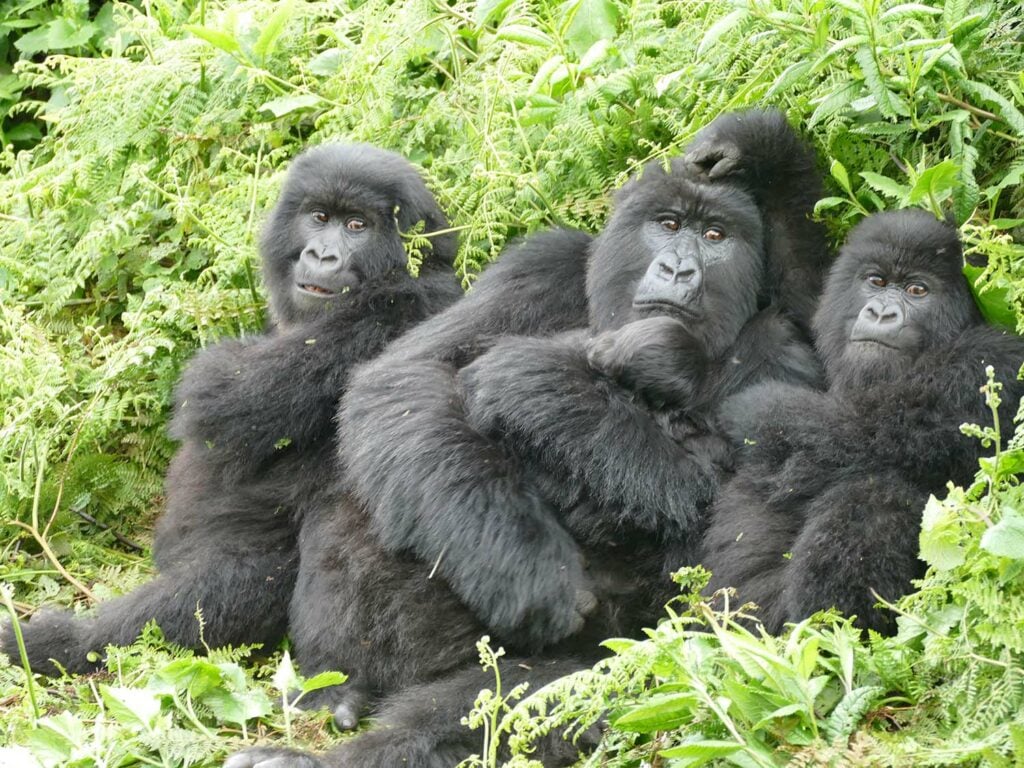Most species, from baboons to humans to horses, commonly experience hardships in later life if they have suffered serious adversity at a young age. But a recent collaborative study between the Dian Fossey Gorilla Fund and the University of Michigan, which analyzed the Fossey Fund’s 55-year database, revealed something different in gorillas. Young gorillas who experienced early adversities – such as parental death or instability in their social group – but survived until the age of 6 did not suffer long-term consequences in adulthood. The new study is published in the journal Current Biology.
This is great news for gorillas but could even help us understand how such events affect humans and how to mitigate them.
“Humans also deal with early life adversities and their effects can follow us into adulthood, such as a shorter lifespan or health complications,” says University of Michigan anthropologist Stacy Rosenbaum, Ph.D., one of the study’s authors and a former researcher at the Fossey Fund. But in humans, it’s difficult to tease out whether we, for example, develop cancer or die early as adults because of an adverse event early in life per se, or whether it’s because of a multitude of behavioral, environmental and cultural factors – or a combination of all of the above, she says.
Like humans, gorillas live a long time and have a small number of offspring that they heavily invest in. This makes them a good comparative animal model for understanding the ramifications of early life adverse events. The researchers looked at over five decades of demographic data collected by the Fossey Fund on 253 wild mountain gorillas living in Volcanoes National Park in Rwanda.
“When you look at animals, you remove a lot of the variation that we have in humans. For example, the gorillas are all eating similar diets, they all get exercise as part of their daily lives, and they don’t have the opportunity to engage in behaviors with negative health outcomes like smoking,” says Robin Morrison, Ph.D., Dian Fossey Gorilla Fund researcher and lead author on the study.
Types of early life adversity
For this study, six different kinds of early life were identified: losing a father or mother, experiencing the death of a group member by infanticide, social group instability, having few age-mates in the social group, and having a competing sibling who was born soon after them. The data included information about how many of these early adversities each gorilla experienced and at what age, as well as how long each gorilla lived.
Segasira (shown as a youngster on left) lost his mother and father before the age of 4 but has recently established himself as the leader of a group at the young age of 17.
The researchers looked at what happened when a gorilla experienced none, one, two or three or more adverse events. They found that the more of these adverse events gorillas experienced before age 6, the more likely they were to die as juveniles. But if, despite experiencing early adversity, they survived until age 6 – past their juvenile stage – the researchers found no evidence that their lifespans were shorter, no matter how many adverse events the gorillas suffered. In fact, the opposite was observed – gorillas who were exposed to early adversities and survived then had a 70% reduction in death across adulthood, perhaps because only the strongest individuals were the ones able to overcome those experiences in early life.

The researchers have some theories about why these mountain gorillas are so resilient. Gorillas have very tight-knit social groups and prior studies have shown that when a young gorilla loses its mom, it doesn’t actually become more isolated: other gorillas fill the gap in social companionship.
“The youngster actually increases its time near other gorillas after the loss of its mom and in particular the highest-ranking adult male, even if he isn’t their biological father,” says Morrison. “These strong networks might provide critical social buffering, as has been shown in humans. The quality of our social relationships is a very important predictor of our health and longevity – in some cases, more important than genetics or lifestyle.”

Another reason they may be relatively buffered from the consequences of adversity is that mountain gorillas live in a resource-rich environment compared to many other wild primates. It may be easier for a gorilla to survive difficult circumstances because they are not also constantly dealing with the stress of finding enough food and water, says Rosenbaum.
”These surprising findings raise important questions about the biological roots of sensitivity to early experiences and the protective mechanisms that can contribute to resilience. Our hope is that they may shed light on how we can minimize the impact of early life adversity in our own species,” says Tara Stoinski, Ph.D.,Fossey Fund CEO and co-author on the study.








